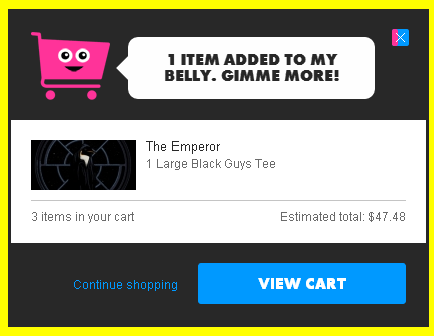One of the most common things you’ll see written about SEO success is likely the much-loved phrase “don’t focus on good content, focus on great content”. Now I expect this probably sounded quite compelling the first time it was mentioned, and with good reason, if you really want to succeed with your SEO campaign you needed to more than produce just enough content to get by. However, this phrase has almost been romanticised beyond the point of usefulness to the point it becomes something that sounds great, but in reality isn’t very helpful at all.
A content strategy is essential - there’s no two ways about it, and this is for two reasons:
- Without content you will struggle
- Without a strategy there will always be something more important which gets in the way.
So what do we mean by content? If we think of it in the “traditional SEO” sense, it is about keyword placement and density, about writing content for the sake of the search engine, not the user. For a long time this was all that content was thought of and that’s why I’ve tried to get this out of the way first. If you want to truly succeed this method of working for the algorithm rather than the user, of only doing just enough, will get you nowhere.
What content really is, is something that users will find interesting, useful or informative, it is why they’ve come to your website and ultimately why they will come back again. Not all websites are created equal - content can take many different forms and whilst for the most part you do need some written content which is unique and relevant, this is not the whole story. When you are in the process of creating a page or a particular piece of text, image, video - whatever - if you are not clear why your audience should care, you need to rethink your whole approach first.
First Things First
Before you start thinking about writing anything new, it is worth working out what resources you already have, what success existing content may have already had, and what your competitors are doing. The insight gained at this stage will ultimately inform your whole strategy as it will give an indication of what already works and more importantly it lets you learn from mistakes without having to make them all over again! Conduct a full content audit of your site, assess if there are any pages which don’t have enough content or perhaps are being duplicated heavily. With the high frequency of updates we’ve seen recently ensuring you’re not breaking Google’s Webmaster Guidelines must be done as a matter of urgency.
Next step, take a look at your Google Analytics and Google Webmaster Tools accounts to establish which pages on your site are getting the most traffic, the most links and the keywords which are gaining the highest visibility in search. If you have a look at the existing information you should be able to work out what elements of your content has worked better than others. When checking competitors you won’t have the benefit of the information that Analytics and Web Master Tools can provide, but there are still other factors which can indicate the success of a piece. Check the amount of comments and social interactions - shares, likes, +1′s, views etc, this way you can at least gauge the level of engagement the content has achieved.
But remember, even after you’ve spent time looking at your content reports you may have overlooked one of the most important resources of all - your staff. If you’ve got co-workers or a team who work directly with the customer, they will likely have a really good insight and understanding as to what the customer need and want to know. Include them within your content process and encourage feedback, you may be sitting on a goldmine and just not realise it!
So now you’re up to speed with where you currently are with your content strategy, the following questions are ones you must ask yourself (or at least be aware of) from now on.
Who Is My Audience?
This almost sounds like a no brainer, but that is exactly why this is the first on the list. Everyone thinks they know who their audience is, but do they really? Your product may be aimed very directly at a specific niche, but is your content and your website? The first stage of creating a content strategy that will take you the distance is finding out who your audience really is, what they like and how you can serve them up a steaming plate-full of it.
Once you know who your audience is, it is worth investigating if they’re are actually searching for what you are offering. Use the Adwords keyword research tool to get a feel for the amount of queries there may be, also you can use Google Trends to establish the interest in your industry, is it growing, shrinking, is the way people are talking about it changing? The more information you have, the surer you can be that there is actually an audience out there for all the awesome content you’re about to make.
What is my Goal?
What is your goal? Really? For B2C or B2B sites the answer will be easy - sales! However, the goals of a good content strategy are much longer term and far reaching than that. You’ll have your chance to write marketing copy, to push your product but we’re looking beyond that; you’re building your brand, encourage engagement with what you can offer. How many times have you visited a website which is full of conspicuous marketing rhetoric and thought “Wow, this is awesome - I’ll tell my friends!” - I haven’t.
What Sorts of Content Can I Produce?
This is most probably the stage were most content strategies tend to fall apart, even if you know who you’re writing for and why you’re doing it - without the perfect way of getting it out there, you’ve got nothing. The best way of getting past this is by having a good ol’ brainstorming session with your colleagues, friends, agency, whatever and then build the mother of all potential content lists. To start with it doesn’t matter if you think the ideas are clichéd, tired, boring, or plain crap, just get everything down first. If you know who your audience is and why you’re writing the content in the first place, it should soon become clear which pieces of content you’re producing will work well and what still needs some further development.
Why Should People Care?
One of the hardest questions to ask when you’re looking at a content strategy is what makes your offering unique or notable? This is hard because it often forces brands or businesses to really consider if they have anything special to offer. Do you have more experience, higher quality, cheaper costs, a witty take, an unusual angle, a product that no one else has? Even the industries which appear mundane still have businesses within them which have something different to offer - and that isn’t just the product, it’s the experience it provides the user. Most importantly though, show everyone that you are the authority on the matter, if this is the case your visitors will never have reason to go anywhere else.
How Often Should I Make Content?
There is a temptation for me to write “when ever you need to” or “when it feels right” and retain some creative credibility for seeming aloof and artistic, however, that doesn’t help when you’re “strategising”, not at all. The more practical answer depends on your resources, having regular content is beneficial both from user experience and SEO points of view, but you have to work within your resources to ensure you can consistently produce content which is high quality throughout the campaign. The key here is to ensure that you stick to your strategy, remember this won’t spring up over night, so dedicate time and resources, make sure it happens!
Where does the content go?
Broadly speaking this can be separated into two categories, on-page and off-page. Always start with on-page content, think of what your website needs to really do the business. For an eCommerce website this could be something as simple as a category description, product review, blog post or even shopping cart confirmation (see above). Blogs and static pages are easier because you can have conventional articles, news features, impressions, interviews, FAQs, whitepapers, slide shows, infographics, videos… you get the idea.
Once you’ve got the on-page sorted the off-page is really what you need in order to shine; you can have the best content in the world, but if no one sees it, it’s wasted. Get out there, engage with users using social media; send out image or video content, embeddable scripts which do something cool, provide statistics or offer an opinion, anything that will interest your audience. Remember, someone running a website will want awesome content as much as you do, so if you can show the value in your offering they’ll have no hesitation in publishing it for you.
When Will I Win the Internet?
A strategy is a long term goal, this is a good hint as to the time frames you’ll be looking at before you’re sitting on page one, position one. Really though, this kind of question is symptomatic of what often kills off a content strategy, you don’t do it until you see results and then move onto the next thing. The whole point of formulating the strategy is to put in place the key building blocks from which your online success will grow. Remember, content should not be produced to appease Google’s algorithms, it’s there to improve engagement, boost brand strength, build social signals, attract new customers, retain old ones - it’s everything your website is built on.
When do I start?
Now!
Creating the strategy is, in all honesty the easy part, getting on and doing it is the real challenge. Even with the best content strategies can be doomed to failure because they’re never implemented, and after you’ve spent all this time working out what you need to do it’d be a shame to waste that, right? But remember, just because you’ve written down a strategy it doesn’t mean you have to stick to it dogmatically, being flexible and able to react to the changes and trends within your industry is an absolute must if you are going to keep yourself from being left behind.
Monitor and refine constantly, if you know what is and isn’t working you can adapt and be ready for anything!


















